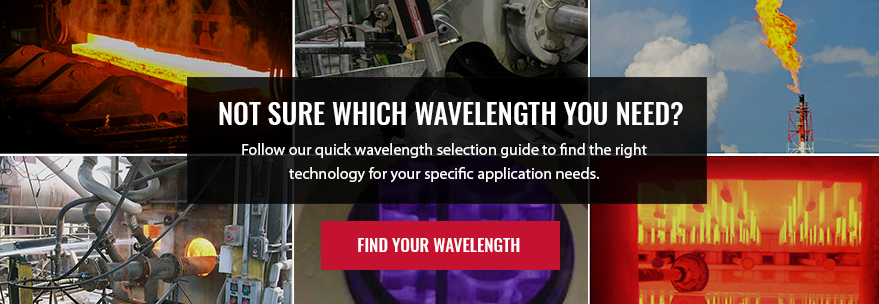States of Matter
There are five states or phases of matter. The three most common states found on earth are solid, liquid and gas. The two less common states of matter occur at opposite ends of the temperature scale. The low-temperature state is the Bose-Einstein state, found only at temperatures very near absolute zero. The high-temperature state is plasma. In the plasma state, there is enough energy stored in the matter for the elemental ions to break free from their molecular bonds. In this state, electromagnetic plasma emissions occur that can interfere with an infrared pyrometer reading.
Common everyday examples of plasma emissions include the light from a neon, mercury vapor or metal halide bulb, the glow from a fire, lightning, ion beams and the light from stars including the sun. Plasma is commonly encountered in the industrial arena in vacuum furnaces, when laser energy passes through air or other gas, or any time a gas is heated to a high temperature.
In order to avoid interference from the presence of plasma emissions, an infrared thermometer must use specific narrowband wavelengths. Thoughtful wavelength selection allows Williamson to offer the only ratio (two-color or dual-wavelength) pyrometers able to view clearly through common plasma emissions, and the only short-wavelength pyrometers filtered to avoid many types of plasma emissions
 Common Industrial Plasmas
Common Industrial Plasmas
- Plasma Vapor Deposition
- Plasma Ion Nitriding
- Ion Beam Heating
- Laser Heating & Welding
- Blanket Gases for Hot Metal
- Flames
Single or Dual-Wavelength Pyrometer?
Single-wavelength pyrometers may be reliably used as long as the target material has a constant and stable emissivity. If you are measuring a greybody material with varying emissivity, dual-wavelength technology will have fewer errors due to emissivity variation compared to single-wavelength technology. Lastly, the plasma emissions must be transparent at the selected wavelength for both single and dual-wavelength technologies.

Using argon as an example: as shown in the emission chart above argon plasma emits a lot of energy throughout a good portion of the short infrared spectrum. However, if we carefully select wavelengths where the emittance is not as strong such as 1.2um and or 1.6um this allows us to view through the argon emittance.

